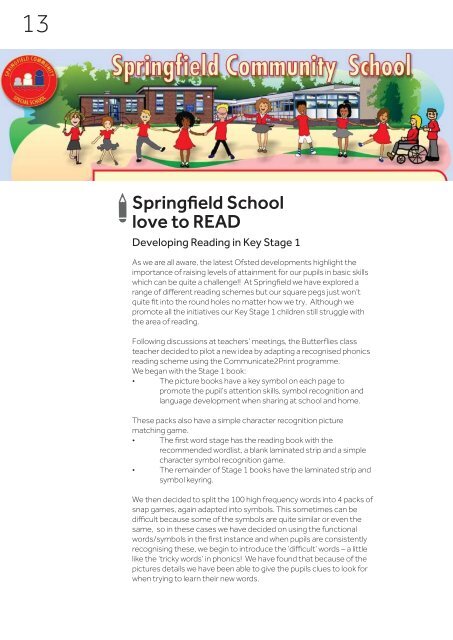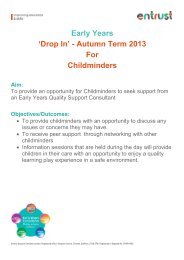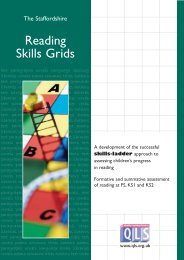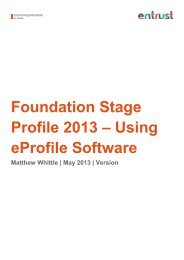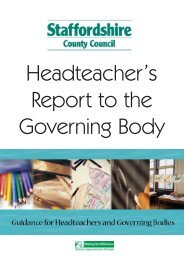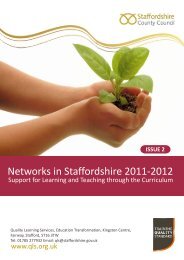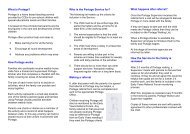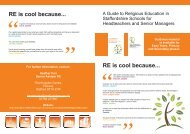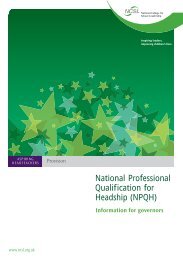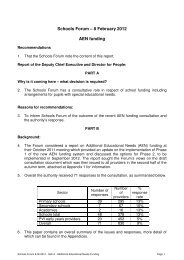SEN Newsletter - Summer 2013 - Staffordshire Learning Net ...
SEN Newsletter - Summer 2013 - Staffordshire Learning Net ...
SEN Newsletter - Summer 2013 - Staffordshire Learning Net ...
You also want an ePaper? Increase the reach of your titles
YUMPU automatically turns print PDFs into web optimized ePapers that Google loves.
13<br />
Springfield School<br />
love to READ<br />
Developing Reading in Key Stage 1<br />
As we are all aware, the latest Ofsted developments highlight the<br />
importance of raising levels of attainment for our pupils in basic skills<br />
which can be quite a challenge!! At Springfield we have explored a<br />
range of different reading schemes but our square pegs just won’t<br />
quite fit into the round holes no matter how we try. Although we<br />
promote all the initiatives our Key Stage 1 children still struggle with<br />
the area of reading.<br />
Following discussions at teachers’ meetings, the Butterflies class<br />
teacher decided to pilot a new idea by adapting a recognised phonics<br />
reading scheme using the Communicate2Print programme.<br />
We began with the Stage 1 book:<br />
• The picture books have a key symbol on each page to<br />
promote the pupil’s attention skills, symbol recognition and<br />
language development when sharing at school and home.<br />
These packs also have a simple character recognition picture<br />
matching game.<br />
• The first word stage has the reading book with the<br />
recommended wordlist, a blank laminated strip and a simple<br />
character symbol recognition game.<br />
• The remainder of Stage 1 books have the laminated strip and<br />
symbol keyring.<br />
We then decided to split the 100 high frequency words into 4 packs of<br />
snap games, again adapted into symbols. This sometimes can be<br />
difficult because some of the symbols are quite similar or even the<br />
same, so in these cases we have decided on using the functional<br />
words/symbols in the first instance and when pupils are consistently<br />
recognising these, we begin to introduce the ‘difficult’ words – a little<br />
like the ‘tricky words’ in phonics! We have found that because of the<br />
pictures details we have been able to give the pupils clues to look for<br />
when trying to learn their new words.


